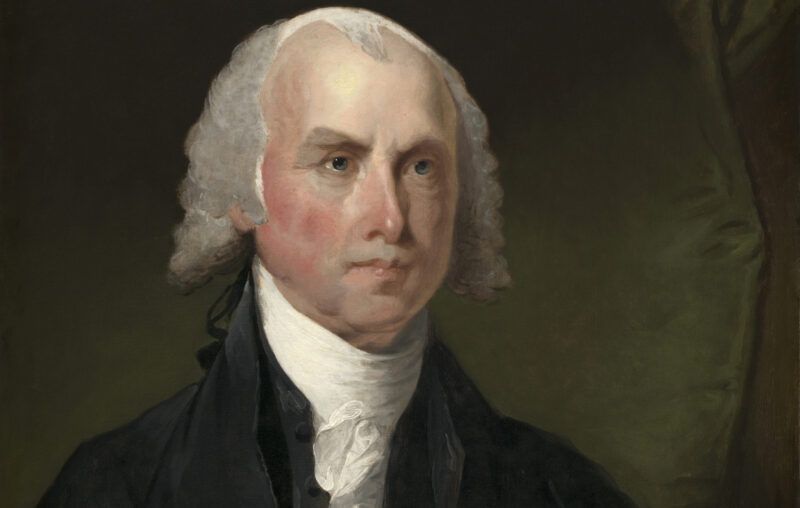Money and the Constitution

Ratified between 1771 and 1781, the Articles of Confederation remained in force until they were superseded by the Constitution in 1788. In force for seven years, the Articles formalized some preexisting institutions such as the Continental Congress, but made no provision for a federal executive branch, and very limited provisions for a federal judiciary—one of the few crimes tried in the new federal courts was piracy, leaving nearly all other offenses to the states to prosecute. During this period, Congress requisitioned financial support from the states in proportion to their population, but these assessments were routinely ignored, or fulfilled only in part. The Articles gave Congress no authority to issue money or levy taxes.
Congress and the states emerged from the Revolution both independent and highly indebted. Some states paid their debts while others did not, and Congress had no real means to retire its own debt or honor the continental currency it had already issued. By printing unbacked money during the Revolution, Congress had effectively rendered this currency worthless. Unlike the states, Congress had no taxing authority to acquire the gold or silver it needed to redeem the paper money it had issued, which was characterized as “not worth a continental;” that is, worthless.
In 1779, George Washington complained as General-in-Chief of the Continental Army, “that a wagon load of money will scarcely purchase a wagon load of provisions.” As President of Congress under the Articles of Confederation, John Jay cautioned state governors against permitting a perception “that America had no sooner become independent than she became insolvent.” From 1781 to 1784, the thirteen states paid less than $1.5 million to the U.S. Treasury, though Congress asked for $2 million in 1783 alone.
A free rider problem became apparent almost immediately, as a few states loyally paid their requisitions but then watched helplessly as other states held back. Furthermore, then as now, some states were in better fiscal situations that made it easier for them to pay, and the political climate in other states made raising local taxes even less palatable.
The U.S. Constitution mentions money only in Article 1, which specifies the structure and powers of Congress. Congress’s authority to issue money was a reaction to the Articles of Confederation, which had reserved this authority exclusively to the states. The Constitution reassigned the power to issue money from the states to Congress. Article 1, Section 8 assigns to Congress the power “to lay and collect taxes, duties, imposts and excises,” for the first time giving the federal government its own taxing authority.
Article 1, Section 8 also authorizes Congress “to borrow money on the credit of the United States.” The states had each borrowed extensively during the Revolution, as well as issuing large quantities of unbacked paper money. Section 8 makes it clear that the federal government can do this also. When the Constitution was ratified, the thirteen states were so highly indebted they had limited ability to borrow more. If the Constitution had permitted the states to print more paper money, that would not have been well received.
Section 8 also authorizes Congress “to coin money, regulate the value thereof, and of foreign coin, and fix the standard of weights and measures.” Regulating standards of weights and measures is mentioned because the Constitution assumes a precious metal standard with fully convertible paper money. Congress can also punish counterfeiting. The Constitution gives Congress implicit authority to make monetary policy, but does nothing to make Congress accountable for its monetary policy. In a sense, Congress is not answerable for how well it regulates our money, apart from its ultimately being answerable to the electorate. Though far from ideal, consider the extent that high inflation—that is, poor monetary management—makes it difficult for politicians to stay in office. This makes Congress answerable to us, though often with a significant, even fatal, delay.
Congress plays little direct role in regulating the dollar’s value today, having long ago abandoned that responsibility to the Treasury and the Federal Reserve. Congress’s principal influence on the value of the dollar comes from implementing fiscal policy through appropriations and tax legislation. This fiscal influence on the dollar is very indirect and also operates with a significant time lag.
The Constitution’s Article 1, Section 10 prohibits the states from coining money, issuing bills of credit, making anything but gold and silver coin a tender in payment of debts, or passing any law impairing the obligation of contracts. Although Section 10 suggests that paper money can never be issued by the federal government, it actually only restricts the states from doing so. The bills of credit mentioned in Section 10 were a now obsolete form of paper money, which certified the issuing government’s indebtedness. They generally stated an explicit promise to pay some form of hard money. A typical formula might state: “The possessor of this bill shall be paid by the Treasurer of the State of Connecticut, forty shillings in Spanish milled dollars, at the rate of six shillings each, or of other silver or gold coins equivalent, with interest at five percent per annum, by the first day of March, 1785. By order of the Assembly in Hartford, dated the first day of March, 1780.”
Some state governments—particularly in New England and the Carolinas—had no means to pay off the bills of credit they had issued during the Revolution without imposing ruinous taxes, which would have principally been tariffs on imports. In this era, this would have included imports from other states. The federal government had assumed the debts of the individual states, though this was not a constitutional feature, but engineered by Treasury Secretary Alexander Hamilton and implemented through the Funding Act of 1790. The promise of federal assumption of the remaining state war debt helped persuade several key states to ratify the Constitution.
After the Constitution was ratified in 1788, the federal government paid off the states’ debt of roughly $25 million at face value—though by this time many current holders of this debt had purchased it at significant discounts, thereby accruing significant profits at taxpayer expense. The federal government financed this through import tariffs and a wildly unpopular excise on distilled spirits. Since the spirit excise not only resulted in the Whiskey Rebellion but also generated little or no net revenue, it was abandoned by 1802.
James Madison, the Constitution’s principal author, could not have anticipated the Civil War which finally freed the nation from the moral abomination of slavery, nor the war’s attendant inflation. The dubious constitutionality of the Federal Reserve System developed in 1912 might have been overlooked if it had provided price stability, lower unemployment, or enhanced economic growth. Since it has given us none of these, we need to look at reforming the Fed, if not abolishing it entirely.










